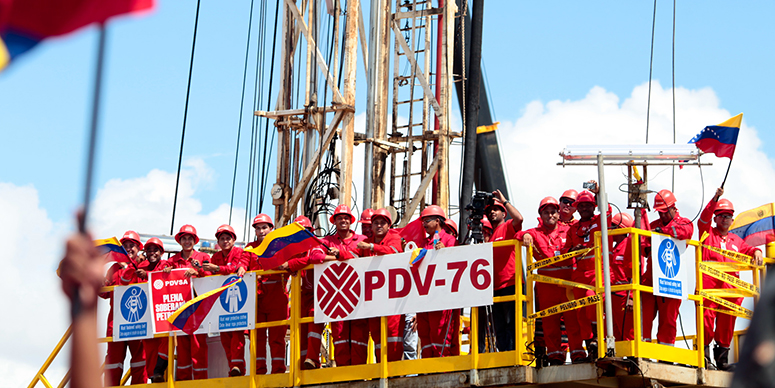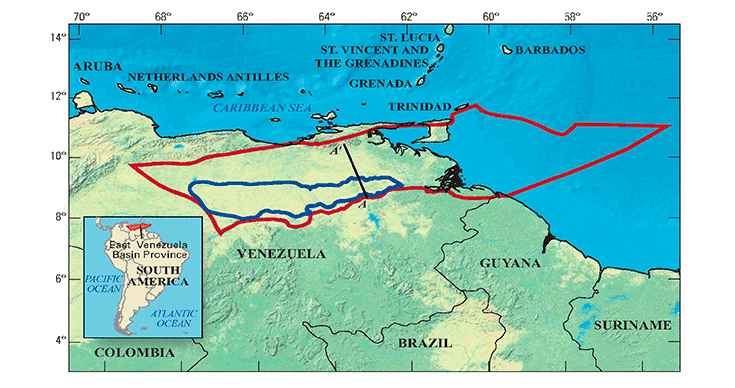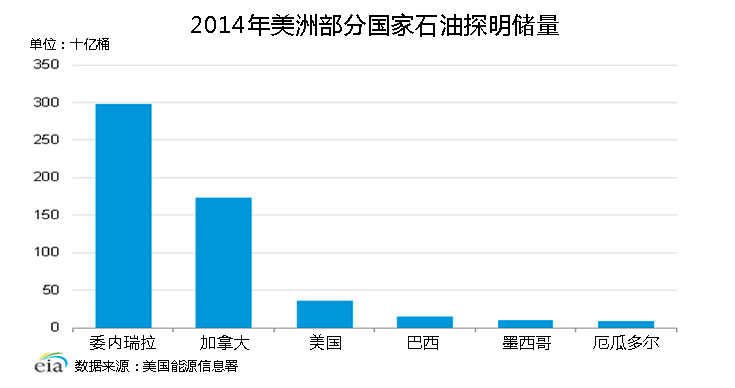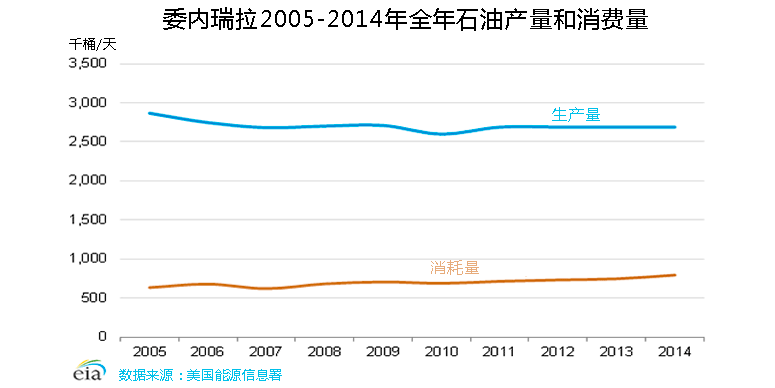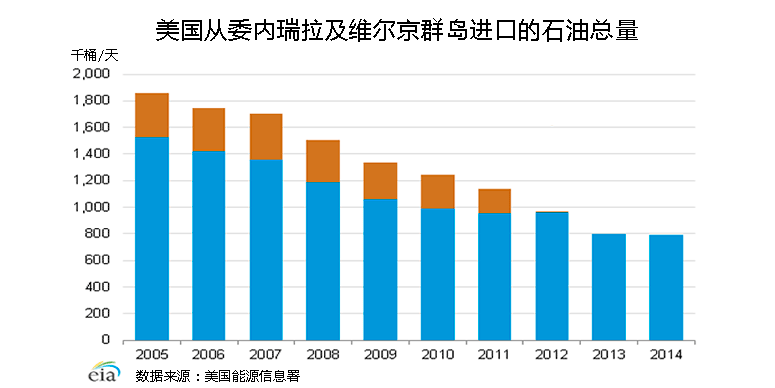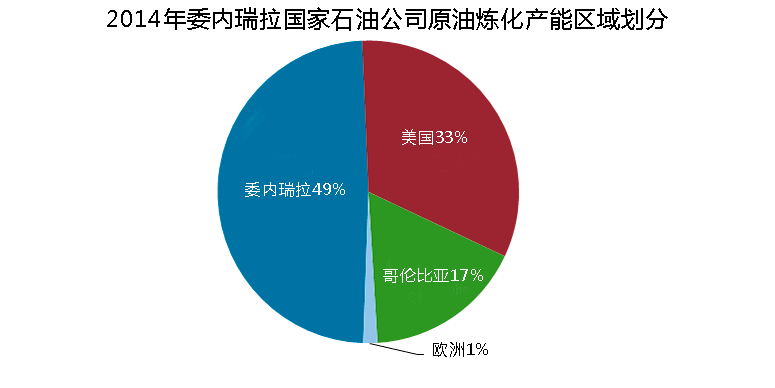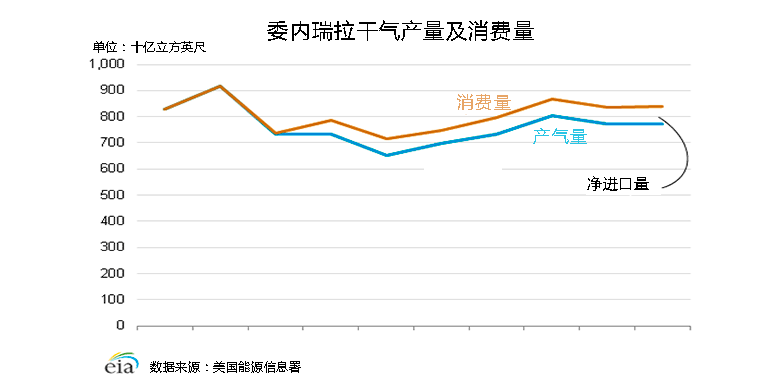Overview
Venezuela contains some of the largest oil and natural gas proved reserves in the world. Venezuela consistently ranks as one of the world’s top suppliers of crude oil to the United States.
Venezuela is one of the world’s largest producers and exporters of crude oil. The country has been one of the largest exporters of crude oil in the Americas. As a founding member of the Organization of the Petroleum Exporting Countries (OPEC), Venezuela is an important player in the global oil market. Although oil production has declined since its peak in the late 1990s, Venezuela has been among the top exporters of crude oil to the United States have been among the largest in the world. In recent years, through significant upfront investment, an increasing share of Venezuela’s exports has been delivered to China.
While Venezuela is important to the global oil market, the government’s reinvestment of oil revenues into social programs instead of reinvestment into exploration, production, and refining has led to declines in output.
In 2014, Venezuela consumed 3.3 quadrillion British thermal units (Btu) of total energy. Oil continues to represent most of the country’s total energy consumed, and natural gas consumption has increased in the past five years. Hydroelectric power meets less than 25% of total demand, and coal represents less than 1%.
Petroleum and other liquids
Venezuela had the world’s largest proved oil reserves in 2014.
In 2014, Venezuela had 298 billion barrels of proved oil reserves, the largest in the world. The next largest proved oil reserves are in Saudi Arabia (268 billion barrels) and in Canada (173 billion barrels). Most of Venezuela’s proved oil reserves are located in its Orinoco heavy oil belt, which has 220.5 billion barrels in proved oil reserves.
Sector organization
Venezuela nationalized its oil industry in the 1970s, creating Petroleos de Venezuela S.A. (PDVSA), the country’s state-run oil and natural gas company. In addition to being Venezuela’s largest employer, PDVSA accounts for a significant share of the country’s gross domestic product (GDP), government revenue, and export earnings. During the 1990s, Venezuela took steps to liberalize the petroleum sector. However, since the election of Hugo Chavez in 1999, Venezuela has increased public participation in the oil industry. The Chavez government initially raised tax and royalty rates on new and existing projects and mandated majority PDVSA ownership of all oil projects.
In 2002, conflicts between PDVSA’s employees and the government led to a strike in protest against the rule of then-President Chavez, largely bringing the company’s operations to a halt. In the wake of the strike, PDVSA overhauled the internal organization to solidify government control. There was a loss of technical capabilities that affected PDVSA’s overall energy production. In 2006, Chavez implemented the nationalization of oil exploration and production in Venezuela, mandating joint ventures with PDVSA with a renegotiation of a 60% minimum PDVSA share in projects. Sixteen firms, including Chevron, ExxonMobil, and Royal Dutch Shell, complied with new agreements, and Total and Eni were forcibly taken over. After Chavez’s death in 2013, President Maduro continued Chavez’s policies. Venezuela is soliciting investment from foreign operators in joint ventures to offset recent production declines.
Exploration and production
At 2.69 million barrels per day (b/d) of petroleum and other liquids produced in 2014, Venezuela is the 12th largest global producer and the 5th largest producer in the Americas.
The U.S. Energy Information Administration (EIA) estimates that Venezuela produced 2.69 million barrels per day (b/d) of petroleum and other liquids in 2014. Crude oil and condensates represented 2.5 million b/d of the total, with natural gas liquids and refinery processing gains accounting for the remaining production. This production level marks a significant decrease from production peaks in the late 1990s to early 2000s, largely because of technical expertise losses from the 2002-03 strike and the diversion of revenues to social programs rather than reinvestment into petroleum production.
Despite its production declines, Venezuela is still the 12th largest producer of petroleum in the world. In 2014, Venezuela was the fifth-largest producer in the Americas, behind the United States, Canada, Brazil, and Mexico.
Estimates of Venezuelan production vary from source to source, partly because of the measurement methodology. For instance, some analysts directly count the extra-heavy oil produced in Venezuela’s Orinoco Belt as part of Venezuela’s crude oil production. Others (including EIA) count the extra-heavy oil as upgraded synthetic crude, the volume of which is about 10% lower than that of the original extra-heavy feedstock.
Venezuela’s conventional crude oil is heavy and sour by international standards. As a result, much of Venezuela’s oil production must go to specialized domestic and international refineries. The country’s most prolific production area is the Maracaibo basin, which contains slightly less than half of Venezuela’s oil production. Many of Venezuela’s fields are mature, requiring large investments to maintain current capacity.
Orinoco belt
Venezuela’s Orinoco Belt may contain up to 513 billion barrels of crude oil. However, much of the resource is heavy and requires additional capital to bring it to market.
Venezuela contains billions of barrels in extra-heavy crude oil and bitumen deposits, most of which are situated in the Orinoco Belt in central Venezuela. According to a study released by the U.S. Geological Survey, the mean estimate of recoverable oil resources from the Orinoco Belt is 513 billion barrels of crude oil
Spread over 22,000 square miles, the belt is divided into 36 blocks within four exploration areas:. Venezuela allows foreign firms to invest, but requires joint ventures with PDVSA holding at least 60% equity. Major joint venture partners include BP, Chevron, China National Petroleum Corporation, ENI, Petrobras, Statoil, and Total.
Although Venezuela has garnered a lot of investment from foreign firms, production from the region has slowed down due to the lack of re-investment into infrastructure to maintain operations. Because the oil produced in the region is heavy, blending lighter oils or using upgraders is required to transport the commodity to market. PDVSA is looking to expand and improve the upgraders at Orinoco but lacks the domestic funding to do so. Instead, PDVSA is seeking financing of $23 billion to improve existing upgraders and expand production facilities from foreign joint venture partners.
Trade
Venezuela was the world’s fourth-largest supplier of imported crude oil and petroleum products to the United States in 2014. However, Venezuela’s exports to the United States have been declining, while U.S. exports of petroleum products to Venezuela have been higher since 2012 than they were historically.
EIA estimates that in 2014 U.S. net imports from Venezuela totaled 713,000 b/d of crude oil and petroleum products, a 26% decrease from five years ago and a significant decrease since the peak of 1.8 million b/d in 1997. Trade data through August 2015 (latest available) show that net imports from Venezuela increased to an average of 727,000 b/d. Venezuela sends a large share of its crude oil exports to the United States because of its proximity and the operation of sophisticated U.S. Gulf Coast refineries specifically designed to handle heavy Venezuelan crude.
In 2014, Venezuela was the fourth-largest supplier of imported crude oil to the United States behind Canada, Saudi Arabia, and Mexico. Venezuela supplied 789,000 b/d of crude oil and petroleum products, 733,000 b/d of which was crude oil. U.S. total imports have been on an overall decline in recent years, falling 30% from a decade ago. In earlier years, U.S. imports of crude oil from the U.S. Virgin Islands were calculated as imported volumes from Venezuela because the petroleum products produced were almost exclusively refined from Venezuelan crude. However, since the U.S. Virgin Island’s Hovensa refinery was shut down in 2012, the U.S. Virgin Islands no longer export refined Venezuelan petroleum.
Although U.S. imports of primarily crude oil from Venezuela have been on the decline, U.S. exports of petroleum products to Venezuela have increased largely because of Venezuela’s tight finances that leave it unable to invest and maintain its own domestic refineries. A decade ago, the United States exported 14,000 b/d of crude oil and petroleum products to Venezuela. In 2014, the United States sent Venezuela 76,000 b/d of petroleum products. More than 40% of which was unfinished oils, which is used to blend into heavy crude oils for processing. Before 2012, Venezuela imported primarily methyl tertiary butyl ether (MTBE), intended for blending in gasoline, motor gasoline, and distillate fuel oil, but it now imports increasing volumes of motor gasoline and distillate.
Although the United States receives about 40% of Venezuela’s crude oil exports, other important destinations of Venezuelan crude oil exports include the Caribbean, Asia, and Europe. The second and third-largest destinations and the fastest-growing destinations of Venezuelan crude oil exports have been India and China. EIA estimates that Venezuela sent more than 300,000 b/d of crude oil to India and 218,000 b/d of crude oil to China in 2014. Exports to China have risen substantially after China signed a loan-for-oil agreement with Venezuela. According to IHS Energy, China’s loans aggregate to USD $56 billion since 2007. Venezuela is a significant net exporter of crude oil, also imports approximately 3,000 b/d to 5,000 b/d annually in the last decade. These imports have come primarily from Ecuadorand Algeria in 2014. Although Venezuela has stopped purchases of light oil from Algeria, it is seeking another seller of lighter oils to blend into its heavier crude stream from the Orinoco oil belt.
Venezuela provides a sizable amount of crude oil and refined products to its regional neighbors. Under the Petrocaribe initiative established in 2005, Venezuela provides crude oil and refined products to 19 countries in the Caribbean and in Central America, offering favorable financing and long repayment terms that often feature barter arrangements instead of cash transactions.
Refining
Venezuela maintained 2.6 million b/d of total global refining capacity assets throughout the United States, the Caribbean, Europe, and domestically in Venezuela in 2014.
Venezuela had 1.3 million b/d of domestic crude oil refining capacity in 2014, all operated by PDVSA. The major facilities include the Paraguana Refining Center (955,000 b/d), Puerto de la Cruz (195,000 b/d), El Palito (126,900 b/d), and San Roque (5,200 b/d).
Although nameplate capacity remains largely unchanged, the throughput from these refineries has suffered because of damage from fires and the lack of investment to maintain the facilities. This problem was highlighted by the Amuay refinery fire in August 2012 that left more than 40 people dead, and disabled some of Venezuela’s refining throughput at the Paraguana Refining Center. The Paraguana Peninsula, which contains the Amuay and Cardón refineries, has the potential to process nearly 1 million b/d of oil, but production has been closer to 50% of capacity.
PDVSA also controls significant refining capacity outside the country, giving it a total global refining capacity of 2.6 million b/d. The largest share of Venezuela’s foreign downstream operations is in the United States, followed by significant operations in the Caribbean and stakes in Europe. CITGO, a wholly-owned subsidiary of PDVSA, operates three refineries (Lake Charles, Louisiana; Corpus Christi, Texas; Lemont, Illinois), with a combined crude oil distillation capacity of 764,000 b/d. CITGO’s gulf coast refineries source most of their crude oil with PDVSA under long-term supply contracts. PDVSA, through its subsidiary PDV Europe B.V., also owns 50% stake of Nynas AB and its refineries across Europe. Similar to its American operations, PDVSA supplies the European operations with 60% of the oil produced in Venezuela.
Although Venezuela depends on crude oil export revenues, it provides large gasoline subsidies, charging $0.01 per liter of gasoline for the past 18 years. This has created a black market for petroleum products in neighboring countries. PDVSA estimates that 30,000 b/d of gasoline is illegally trucked and sold to Colombia.
Natural gas
Venezuela has the second-largest natural gas reserves in the Americas, behind the United States. Much of Venezuela’s natural gas is used to bolster production in its mature oil fields.
Venezuela had 196 trillion cubic feet (Tcf) of proved natural gas reserves in 2014, the second-largest in the Americas behind the United States. In 2014, Venezuela produced 773 billion cubic feet (Bcf) of dry natural gas and consumed 838 Bcf of natural gas.
In 2014, Venezuela’s petroleum industry consumed 35% of the country’s gross natural gas production, primarily for gas reinjection to bolster crude oil extraction. Because of the declining output of mature oil fields, natural gas use for enhanced oil recovery has increased by 29% since 2005. To meet the growing industrial demand for natural gas, Venezuela imports natural gas from Colombia. Venezuela’s government has prioritized the development of domestic natural gas production for industrial uses as well as residential and commercial markets, and it is developing its gas infrastructure to support this effort.
Sector organization
In 1999, Venezuela adopted the Gas Hydrocarbons Law, which was intended to diversify the economy through encouraging nonassociated natural gas development and through expanding the role of natural gas in Venezuela’s energy sector. This legislation allows private operators to own 100% of nonassociated projects, in contrast to the ownership rules in the oil sector. The legislation also mandates lower royalty and income tax rates on nonassociated natural gas projects than on oil projects. The law gives PDVSA the right to purchase a 35% stake in any project that moves into commercial status.
PDVSA produces the largest amount of natural gas in Venezuela, and it is also the largest natural gas distributor. A number of private companies also currently operate in Venezuela’s gas sector. Participants with significant assets include Repsol-YPF, Chevron, and Statoil.
Exploration and production
About 90% of Venezuela’s natural gas is found associated with oil, but the country is looking to locate and produce more natural gas from nonassociated fields.
An estimated 90% of Venezuela’s natural gas reserves are associated, meaning they are located in the same place as oil reserves. Although Venezuela planned to increase production of nonassociated gas, largely through the development of its offshore reserves, but it has been delayed because of the lack of capital and foreign investment. Onshore, PDVSA is working to increase production and capacity at existing sites, including the Anaco field, the Barrancas field, and Yucal Placer. Offshore, PDVSA has awarded exploration blocks to international oil companies, including Total, Statoil, and Chevron, in the Plataforma Deltana, Marsical Sucre, and Blanquilla-Tortuga areas off Venezuela’s northeast coast. Venezuela has also awarded exploratory blocks to Gazprom and Chevron to develop the potential 26 Tcf natural gas blocks in the Gulf of Venezuela in the northwestern part of the country. The first Deltana liquefied natural gas (LNG) train, which was scheduled to begin operation in 2014, has been delayed because of funding difficulties.
Offshore exploration has yielded many successful natural gas finds, including Repsol-YPF’s and ENI’s discovery of 6-8 Tcf of recoverable natural gas in the Perla field, located in the Cardon IV block in the Gulf of Venezuela–one of the largest natural gas discoveries in the history of the country. In July 2015, operations began at the Perla field project, where output has reached 150 million cubic feet a day. Production is expected to reach 450 million cubic feet per day by the end of 2015.
PDVSA had also found a field with a potential of 7.7 Tcf natural gas reserve at Tia Juana Lago in the Sur area. For Venezuela’s offshore natural gas development to move forward, international partners will need to play a central role in production. PDVSA does not have experience in producing nonassociated gas,the company’s most recent attempt at operating an offshore natural gas project resulted in the sinking of the Aban Pearl semi-submersible drilling rig in May 2010.
Pipelines
In recent years, Venezuela has improved its 2,750-mile domestic natural gas pipeline transport network to allow greater domestic movement and use of natural gas with the roughly 190-mile Interconnection Centro Occidente (ICO) system. The ICO connects the eastern and western parts of the country, making natural gas more readily available for domestic consumers and for reinjection into western oil fields. Expansion efforts to the ICO will increase capacity to 520 million cubic feet per day (MMcf/d). In addition, the 300-mile Sinor Gas pipeline project will transport natural gas produced offshore to the domestic pipeline network via the states of Sucre and Anzoategui.
The Antonio Ricaurte pipeline came online in 2008, connecting Venezuela with Colombia. The pipeline allowed Colombia to export natural gas to Venezuela, with contracted volumes ranging between 80 MMcf/d and 150 MMcf/d. Although Venezuela planned to eventually export 140 MMcf/d of natural gas to Colombia, difficulties surrounding the development of its resources required Venezuela to continue to import natural gas from Colombia. In 2014, the Colombian government suspended natural gas exports because of drought and a decline in water levels for hydroelectric power, but then they resumed exports later in 2014, but at lower levels. In June 2015, PDVSA said it would not renew the supply contract, according to the Economist Intelligence Unit.

 石油圈
石油圈